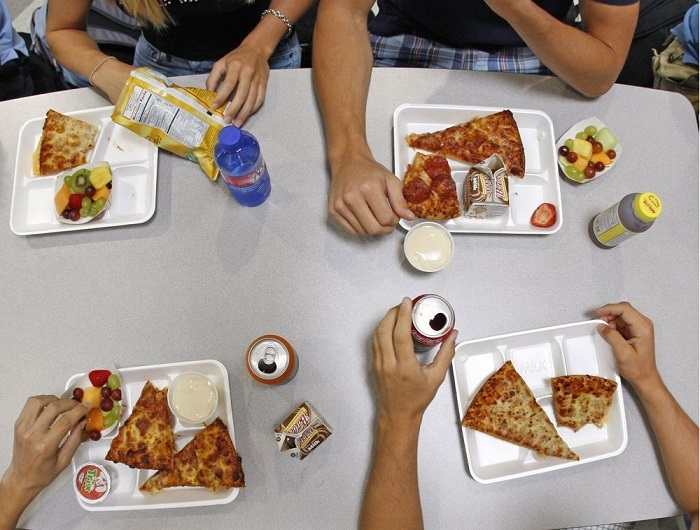Anticipated National School Nutrition Standards Should Have Negligible Financial Impact on Schools and Beverage Industry

Sugar Drinks' Role in Obesity, Diabetes, and Heart Disease Warrants Strong National School Beverage Standards
When the U.S. Department of Agriculture implements new national nutrition standards for beverages sold through school vending machines, a la carte lines in cafeterias, and school stores, they should have little or no financial impact on schools or the beverage industry. That's the finding of a new analysis from the nonprofit Center for Science in the Public Interest, which has long campaigned for getting sugar drinks and junk food out of schools.
Full-calorie sodas already are gone from most schools, thanks to a number of state and school district policies and an agreement the beverage industry struck with the Alliance for a Healthier Generation. USDA proposed continuing to permit the mix of beverages allowed under that agreement for elementary, middle, and high schools. But CSPI and other health groups have urged the agency to exclude Gatorade-type "sports drinks" and other mid-calorie beverages from high schools, which the industry's agreement with the Alliance permits. According to CSPI, those beverages account for only $0.74 per student per year in school revenue and could easily be replaced by lower-calorie drinks.
Much progress has been made improving the beverage mix in schools—90 percent fewer beverage calories were shipped to schools between 2004 and the 2009-2010 school year, according to an audit by the beverage industry. Still, 88 percent of high school students and 63 percent of middle school students have access to sugar drinks at school, largely in the form of sports drinks.
"Sugar drinks promote weight gain, obesity, diabetes, and tooth decay in children and don't belong in schools," said CSPI nutrition policy director Margo G. Wootan. "The good news is that finishing the job of getting sugar drinks out of schools should have a negligible financial impact on schools and the beverage industry."
Sales in schools account for less than one percent of overall beverage sales in the U.S., according to CSPI's analysis. CSPI found schools earn an average of $3.72 per student per year from beverages sold through vending and other venues outside of the school meal programs.
Sports drinks are only recommended to enhance performance of individuals engaged in continuous, high-intensity workouts lasting for more than 60 minutes, according to the American Academy of Pediatrics. A typical 12-ounce Gatorade has all the added sugars most children and teen girls should consume in a whole day and two-thirds of the recommended amount for teen boys, according to recommendations by the American Heart Association.
CSPI and other health groups recommend that mid-calorie beverages in high schools contain no more than 40 calories per container. Examples of beverages that could be sold under that standard include flavored seltzer waters, Gatorade G2, Tropicana Light Lemonade, Ocean Spray Diet Cran-Pomegranate, and Diet 7-Up. Coca-Cola alone sells over 800 no- or low-calorie beverages globally.
"High school students who consume sugar drinks—we call them 'junk drinks'—at school consume 230 more calories on average a day than student who do not drink sugar beverages at schools," said Judi Larsen of The California Endowment. "Studies link strong state and local school nutrition standards with decreased calorie intakes and lower obesity rates in children."
The regulations for school foods sold outside of the meal programs—called "competitive foods"—are required by the Healthy, Hunger-Free Kids Act of 2010. The regulations were proposed by USDA on February 8, 2013, and the period for public comment closed on April 9. Final regulations are expected later this year.

